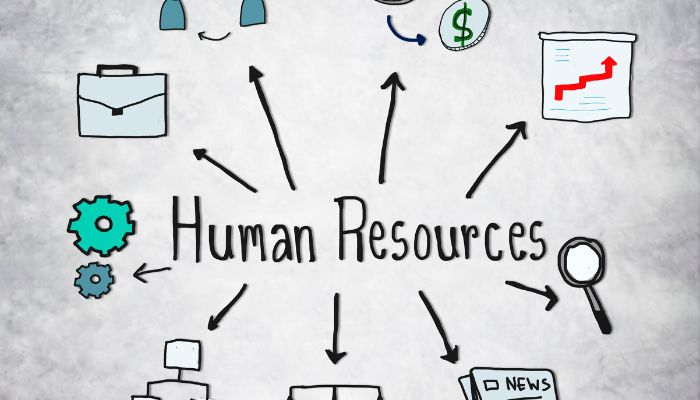In the constantly changing business environment, modern organizations understand the need to focus on their most valuable resource- their employees. Keeping employees engaged and motivated is key to achieving their organizational goals. Employee engagement as a buzzword has gained traction recently but the concept behind it is age-old. It is achieved when organizations take pains to convince their employees that their work is important to achieve organizational goals. Employees also feel that their personal aspirations of growth and rewards are taken care of.
What does it mean?
Although many have attempted to define the term employee engagement, the real meaning of the term is the connection the employees have with their organization. When employees feel connected, they are willing to put extra efforts. The emphasis is on the employer as well as the employees. According to Perrin’s Global Workforce Study (2003), employees willingness and ability to help their company succeed on a sustainable basis, is employee engagement.
How to achieve employee engagement?
Managing Human capital effectively defines the success of any organization. Keeping employees engaged and motivated and in high spirits at all times is the challenge modern managers must overcome. A step by step approach to achieving this is as follows:
- To begin with, the HR team must spend time in designing appropriate questions for an employee engagement survey.
- Open and transparent communication is very helpful in getting relevant feedback. Management should encourage employees to offer suggestions and solutions. It is important to offer different communication channels to the employees as per their comfort level, for the survey. Once the survey is done, the management must analyse the results.
- An action plan should be devised to boost employee engagement.
- The management must follow up on the action plan to see if it is working well or not.
You might also be interested to read: Employee Retention – A Major Cause of Worry
Benefits of engaged employees
To really know the advantages of an engaged workforce, it will be prudent to know the damage disengaged employees can wreak on a company. These are poor workers. Their effect on other workers is negative. This brings down the morale of the whole team. They do not care for customers. The productivity and performance of the company suffer enormously due to disengaged employees.
Engaged and motivated employees, on the other hand, are enthusiastic workers willing to shoulder additional responsibility. They are willing to innovate at the workplace. They bring about positivity and high energy to their work and serve as ambassadors for their company bringing in more customers.
Employee engagement activities/initiatives
Companies take different initiatives to keep their employees engaged in their work and in the organization. These initiatives can be custom-made incentives or facilities like crèche or schools for children, transport, meals, entertainment, sports and medical facilities etc. Every company has its reward- motivation programs which help in increasing employee engagement.
A research conducted by Kenexa in India, US, UK, Brazil, Denmark, Japan and many other countries revealed a big surprise. India with 71% employee engagement ratio secured first place and Japan with 38% employee engagement ratio was the last. Indian companies did well in terms of showing real concern towards employees’ careers and giving them opportunities to grow. Indian companies took good initiatives in increasing employee engagement by creating positive work culture even in the midst of difficulties. These companies regularly arrange interactions of employees with the top management. Many companies offer their employees flexibility and democracy of choosing wages and perks depending upon their work and lifestyle. All these initiatives work well to retain good employees.
Employee engagement strategies
Despite having many initiatives and activities, an organization has employees whose engagement levels will differ. All employees will not work to their maximum potential for a variety of reasons. Broadly speaking the workforce can be put in three categories: engaged, not engaged and actively disengaged. Obviously, the goal of management is to have the largest percentage of engaged workers and a minimum percentage of the actively disengaged. Studies have shown that engaged employees are way more productive than others. To make this happen, it is important to facilitate healthy relationships with their colleagues, juniors and seniors. Certain openness in communication and collaboration goes a long way in making them belong to the organization.
Equally important is the manager-employee relationship. A manager must do the following, to foster a feeling of belonging in the employees
- Align effort with strategy: employees must see a clear connection between their work and the larger goal of the organization. This link provides the motivation and engagement. Management should involve employees in the business planning process.
- Organization culture: the identification of the employee with the culture of the organization makes the bond stronger. A strongly bonded employee will always go beyond the call of duty.
- Help employees grow by delegating responsibility: new workplaces have a younger workforce hungry for participating in decision making. These employees are eager to resume bigger responsibilities and look for leadership roles.
- Provide support when needed: people like to increase their knowledge and skill sets. Management should provide a learning culture to its employees as it is essential for both the employees as well as organizations to stay relevant in the ever-changing business scenario. Creation of a knowledge sharing support system is a good idea.
- Performance management: A good performance management system is a necessity for employee engagement. Goal setting, an equitable way to assess performance and appropriate feedback are essential to foster a bond between employees and the organization. Creating excitement about upcoming opportunities also ups the engagement levels.
- Recognition when deserved: reward and recognition are primary reasons why people work. A fair reward and recognition program increases motivation and engagement.
To sum up, open and honest communication, a good relationship with peers, collaboration and teamwork and effective organization policy, all contribute to employee engagement. Actually, it is more about providing an enabling environment that the employees need to flourish than anything else.






